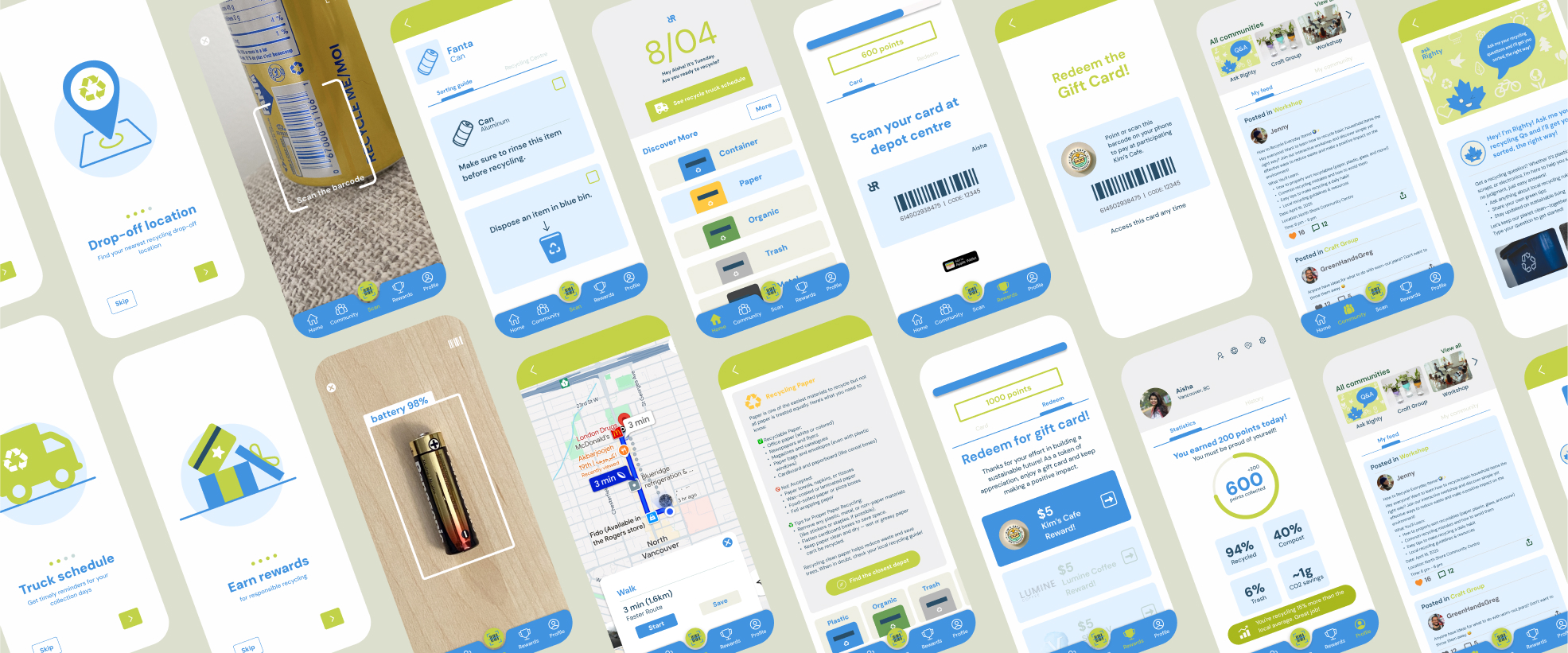Recycle Right
Mobile Application for Newcomers
My Capstone project, Recycling Right, is a guidance and management app that helps users navigate local recycling systems with confidence. Growing up in Kyrgyzstan, where recycling was rarely practiced, I always felt uneasy about the waste around me. Later, I moved to South Korea, where recycling is taken very seriously. It was a challenge to learn at first, but I became fascinated by how organized and thoughtful the system was. After settling in Canada, I noticed that even in a country that promotes recycling, the rules can still feel confusing and inconsistent. This inspired me to design a solution that not only simplifies recycling but also supports environmental goals by reducing landfill waste, conserving natural resources, and lowering pollution and emissions.
-
ROLE
UX/UI Research
Branding
App Ideation and Design
-
CLIENT
Student Project for Capstone
-
TOOLS
Figma
Google Forms
-
TIME
Spring, 2025 (12 weeks)
SUMMARY
-
PROBLEM STATEMENT
Improper waste disposal and recycling confusion are major challenges in Vancouver, where a significant portion of recyclable materials still ends up in landfills.
-
OUTCOME
An app designed to provide clear, localized recycling guidelines, intuitive sorting assistance, and educational prompts that help users build better recycling habits, reduce landfill waste, and contribute to a more sustainable and environmentally conscious community.
FiNAL OUTCOMES
An app designed to simplify recycling through barcode scanning and shape recognition, offering clear disposal instructions based on local guidelines. Recycling Right features a home dashboard, a rewards system to motivate sustainable habits, and user profiles to track progress. The community hub allows users to share tips, join group challenges, and access an AI-powered chatbot for quick recycling-related questions and support. Together, these features help reduce landfill waste and build a more informed, eco-conscious community.
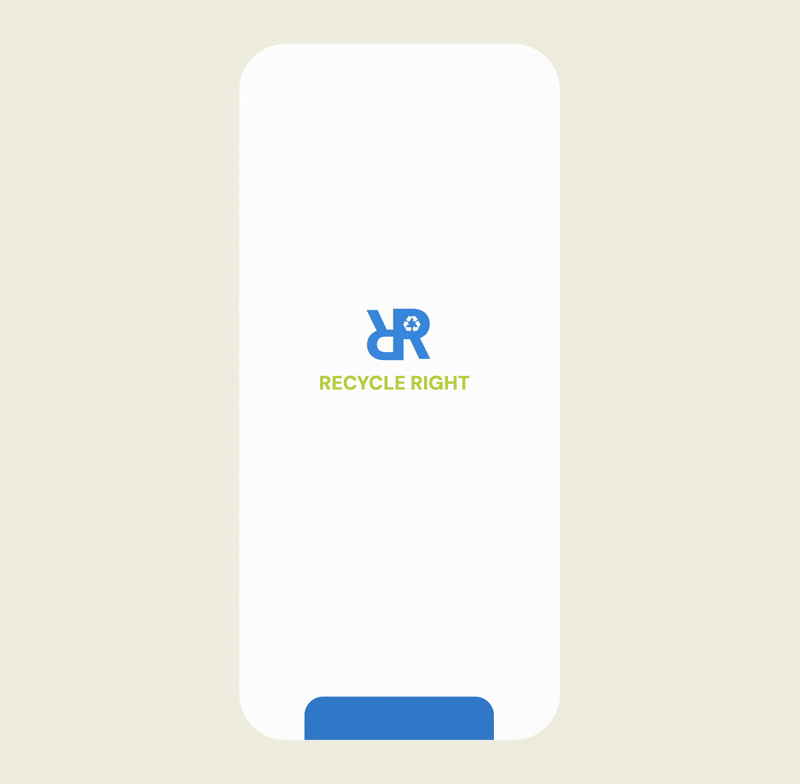
ONBOARDING, LANGUAGE OPTION & REGISTRATION
The app’s onboarding process begins with language selection, ensuring users engage in their preferred language. Subsequent animated illustrations introduce key features, enhancing user engagement.
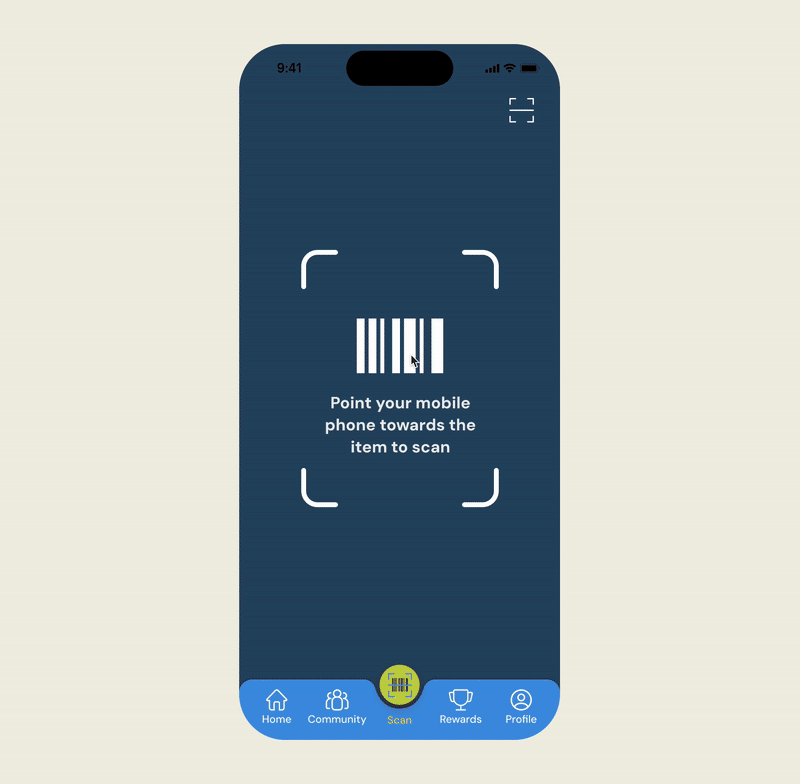
Barcode scanning & Shape recognition feature
The app features a dual-mode scanning system, allowing users to identify items either by scanning their barcodes or, if unavailable, through shape recognition. Accessible via icons in the top-right corner, users can seamlessly switch between these modes. Upon scanning, the app provides immediate disposal instructions and offers directions to the nearest recycling depot, ensuring users can responsibly dispose of items with ease.

HOME PAGE
The home page addresses key user concerns identified through surveys, where 77% of respondents expressed confusion about sorting materials, and 45% reported a lack of clear recycling information. Additionally, interviews revealed that users often miss recycling truck schedules. To tackle these issues, the home page features a recycling day reminder, provides the recycling truck schedule, and offers information on various types of recyclable materials.
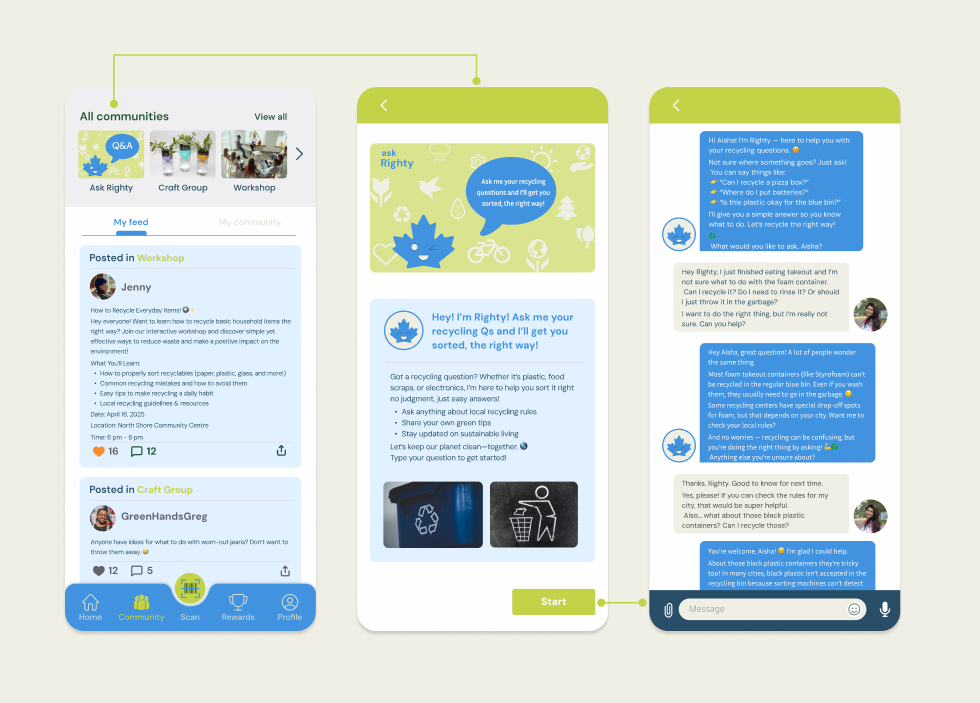
COMMUNITY PAGE
The Community page enables users to share recycling tips, join workshops and craft groups, and participate in Q&A discussions. Additionally, the chatbot "Righty" provides instant answers to user questions, enhancing the responsiveness of the Q&A experience.
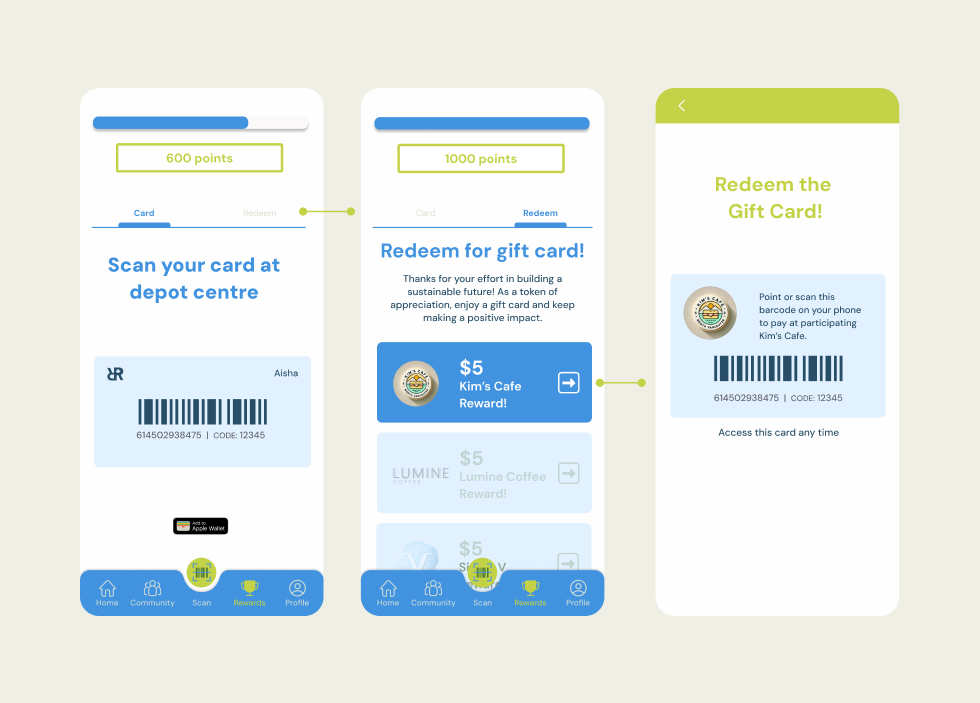
REWARD PAGE
To further motivate responsible behavior, the app includes a reward feature where users can earn points only when scanning items at verified recycling depots. These points can be redeemed for gift cards.
RESEARCH
To explore the recycling challenges in British Columbia, especially for newcomers settling in Vancouver, I conducted a multi-method research process. This included a literature review of regional waste management reports and public recycling resources, a quantitative survey with 22 participants and in-depth interviews with 4 individuals to gather personal experiences and behavioral insights. I also performed a competitor analysis of existing recycling tools and mobile apps to identify gaps and opportunities in user engagement, communication, and feature design.
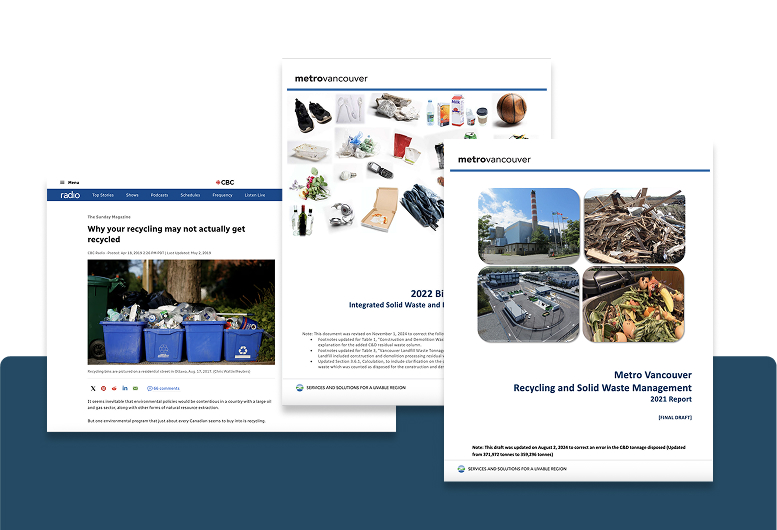
Literature Review
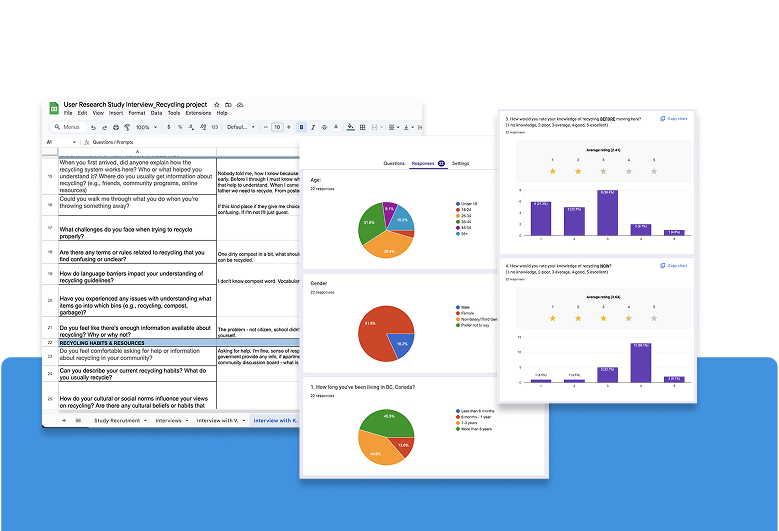
Survey and Interview
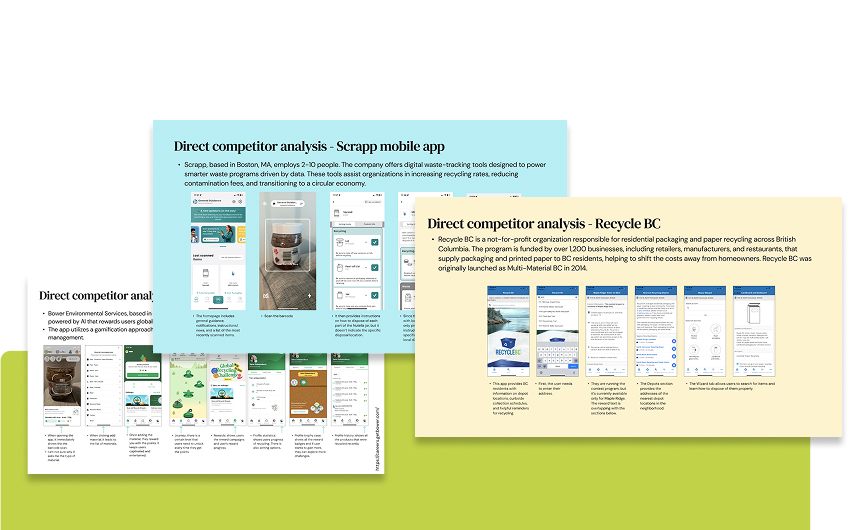
Competitor Analysis
USER RESEARCH FiNDINGS
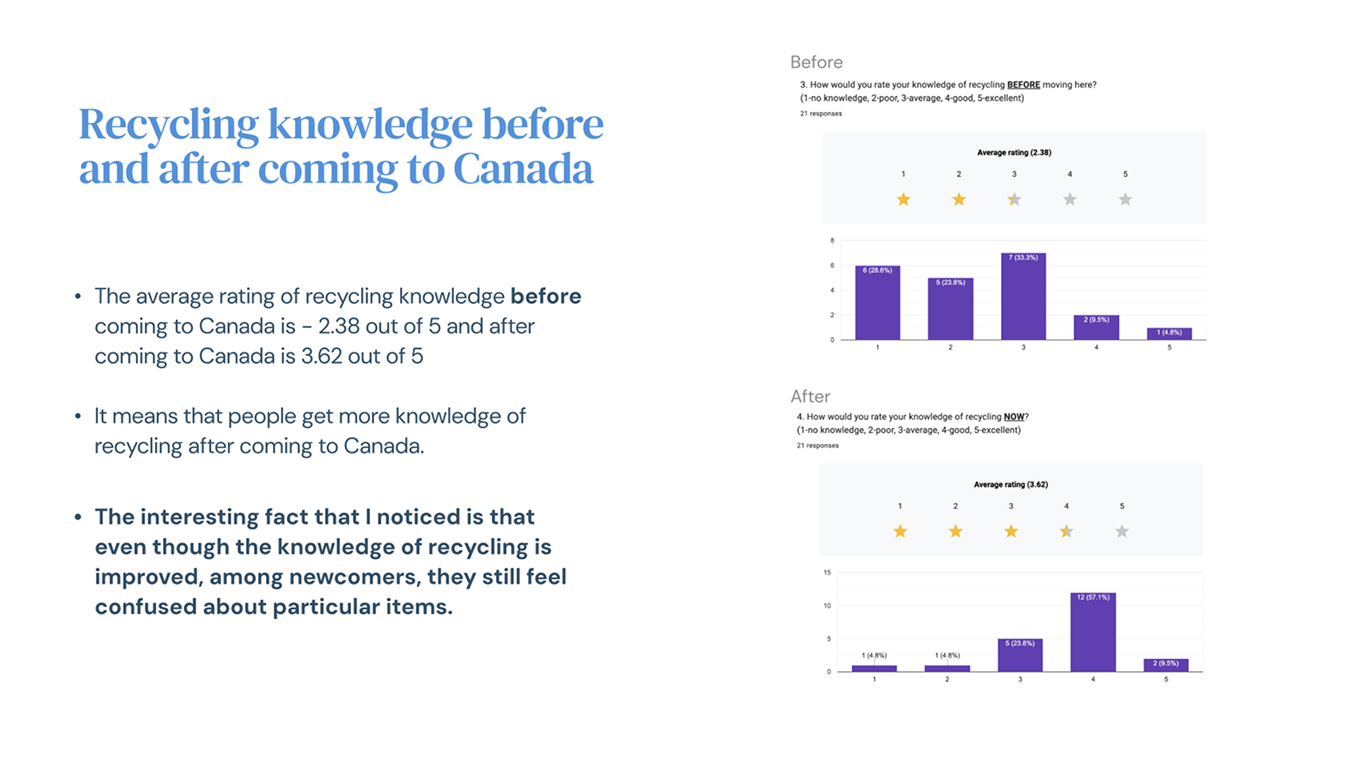
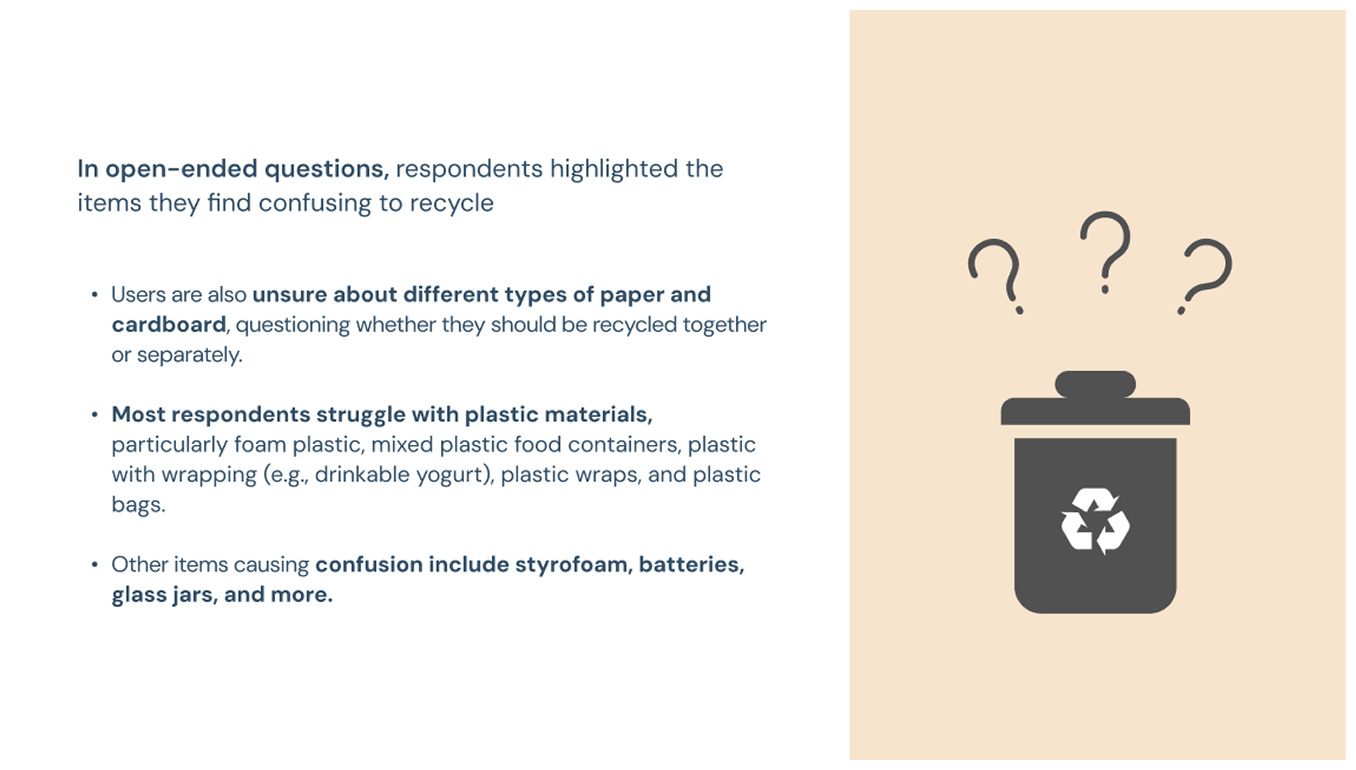
KEY INSiGHTS
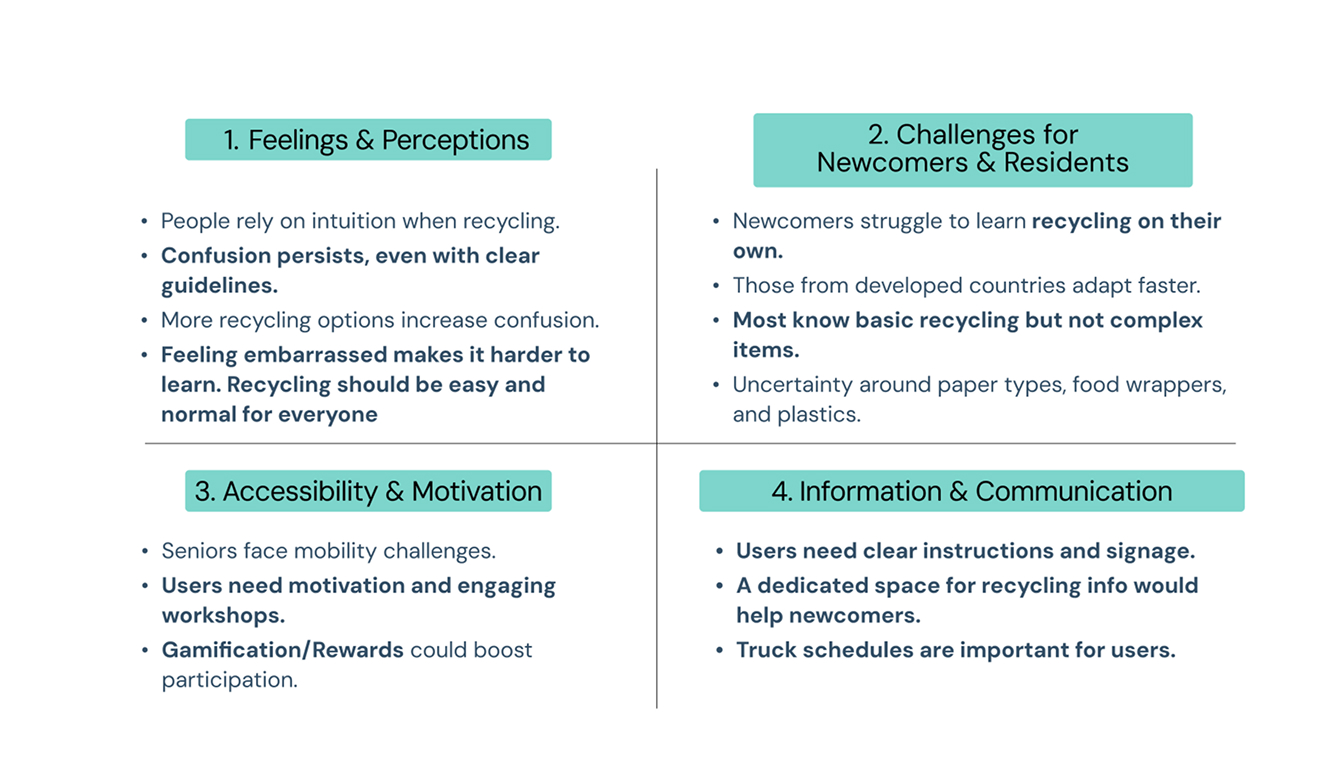
PRiMARY & SECONDARY TARGET AUDiENCE PERSONAS
To explore the recycling challenges in British Columbia, especially for newcomers settling in Vancouver, I conducted a multi-method research process. This included a literature review of regional waste management reports and public recycling resources, a quantitative survey with 22 participants and in-depth interviews with 4 individuals to gather personal experiences and behavioral insights. I also performed a competitor analysis of existing recycling tools and mobile apps to identify gaps and opportunities in user engagement, communication, and feature design.
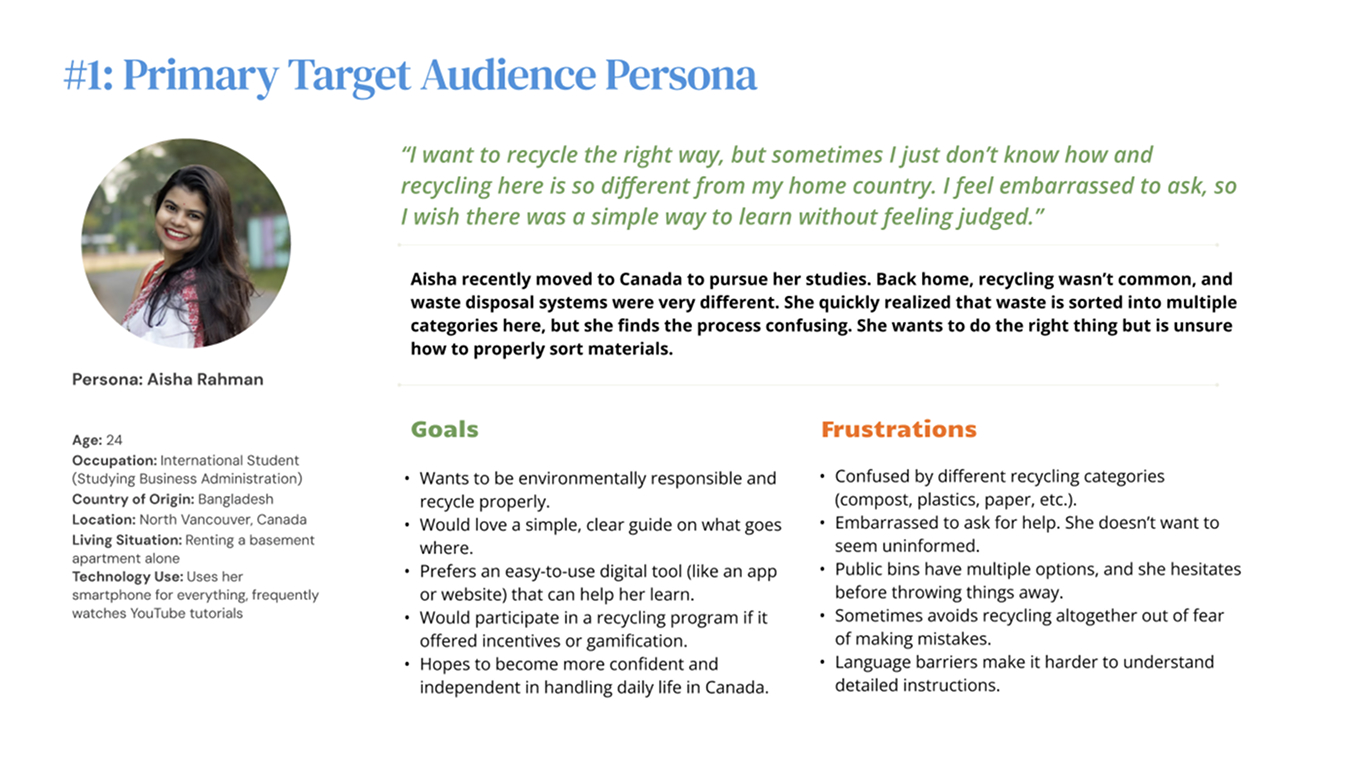
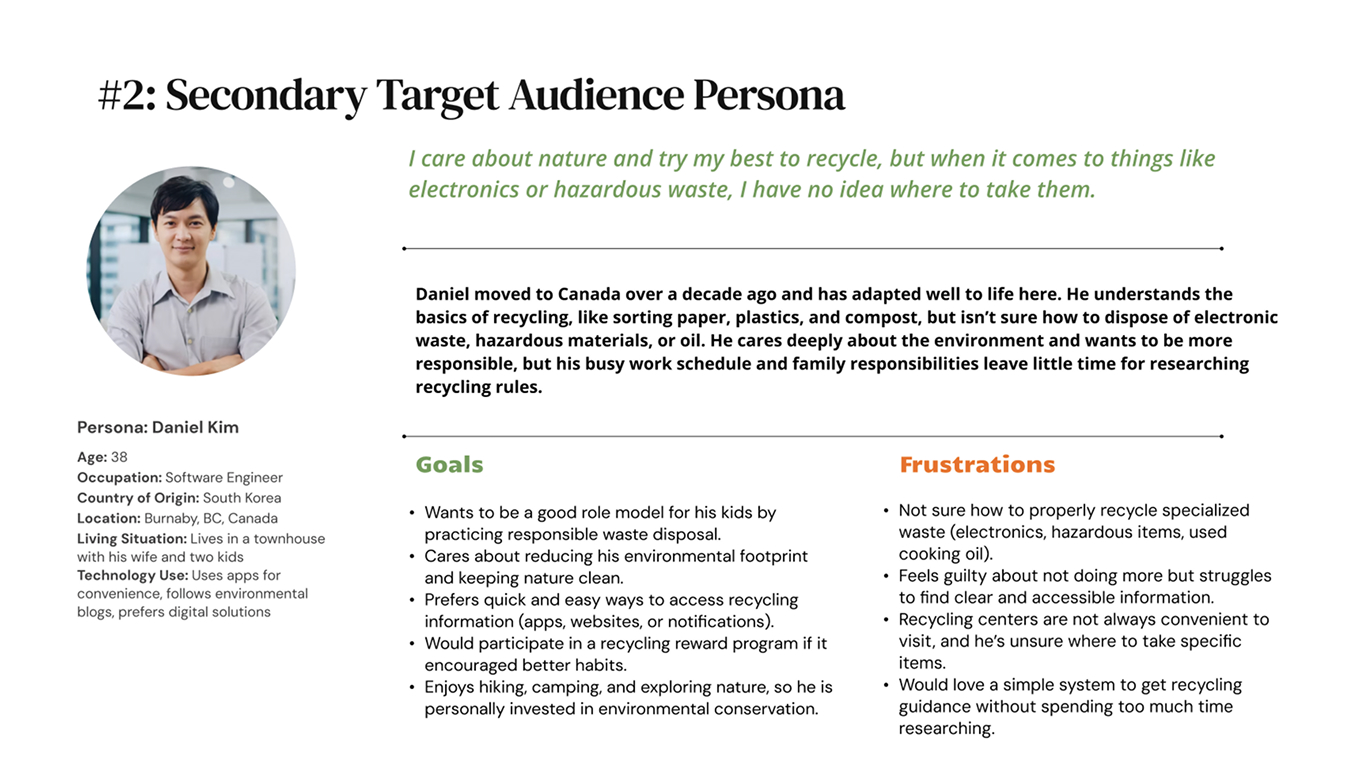
RESEARCH INSiGHTS
-
POINT OF VIEW STATEMENT
Aisha is a newcomer who struggles with recycling due to unclear sorting guidelines and differences from the system she was familiar with in her home country. The lack of straightforward, localized information leaves her feeling confused and anxious about making mistakes. This often results in feelings of embarrassment or hesitation when trying to recycle correctly.
-
HOW MIGHT WE
How might we make recycling easier and more approachable for newcomers like Aisha by offering clear, culturally sensitive information and reducing the fear of doing it wrong?
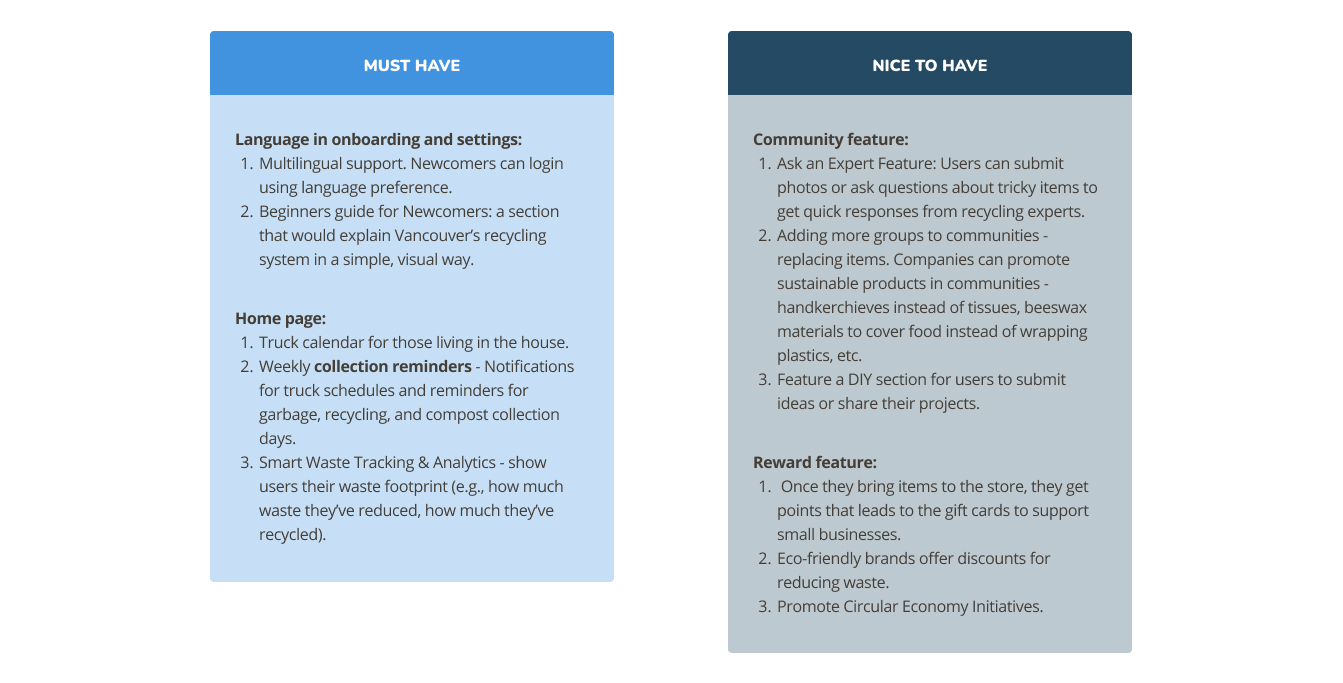
LEARNING
This project deepened my understanding of how design can directly support social good and everyday behavior change. Through user research and feedback, I learned how important it is to create simple, intuitive flows, especially when addressing complex topics like recycling.
Presenting the prototype to users helped me recognize the value of clear information hierarchy and visual clarity. Users consistently appreciated when features were not only functional, but also easy to find and understand. This reinforced the importance of designing with both usability and accessibility in mind.
I also learned the value of iteration and feedback. Every round of testing helped refine the experience, from improving the scanning flow to introducing helpful features like the Home screen, truck schedule, and recycling reminders.
Overall, this project reminded me that good design is not just about aesthetics, it’s about creating meaningful, useful tools that empower people in their everyday lives.
